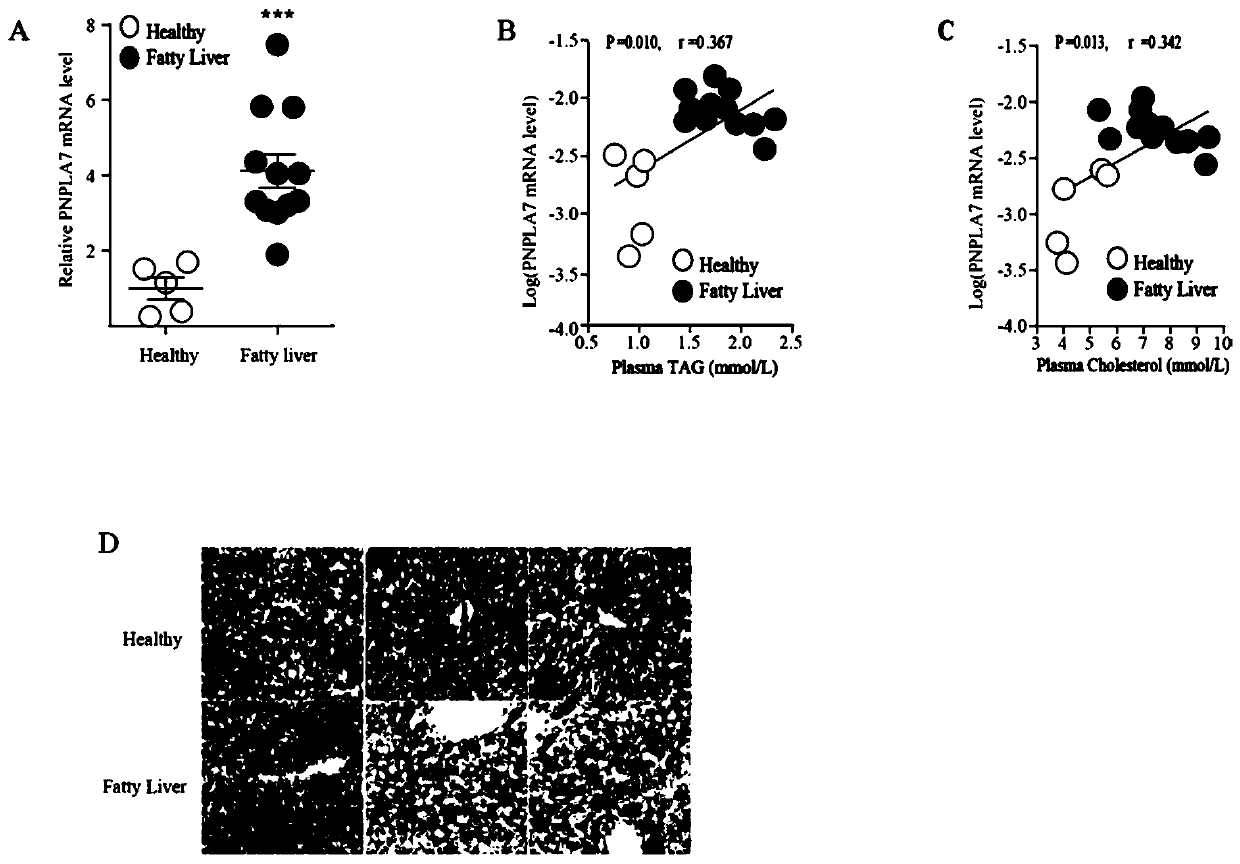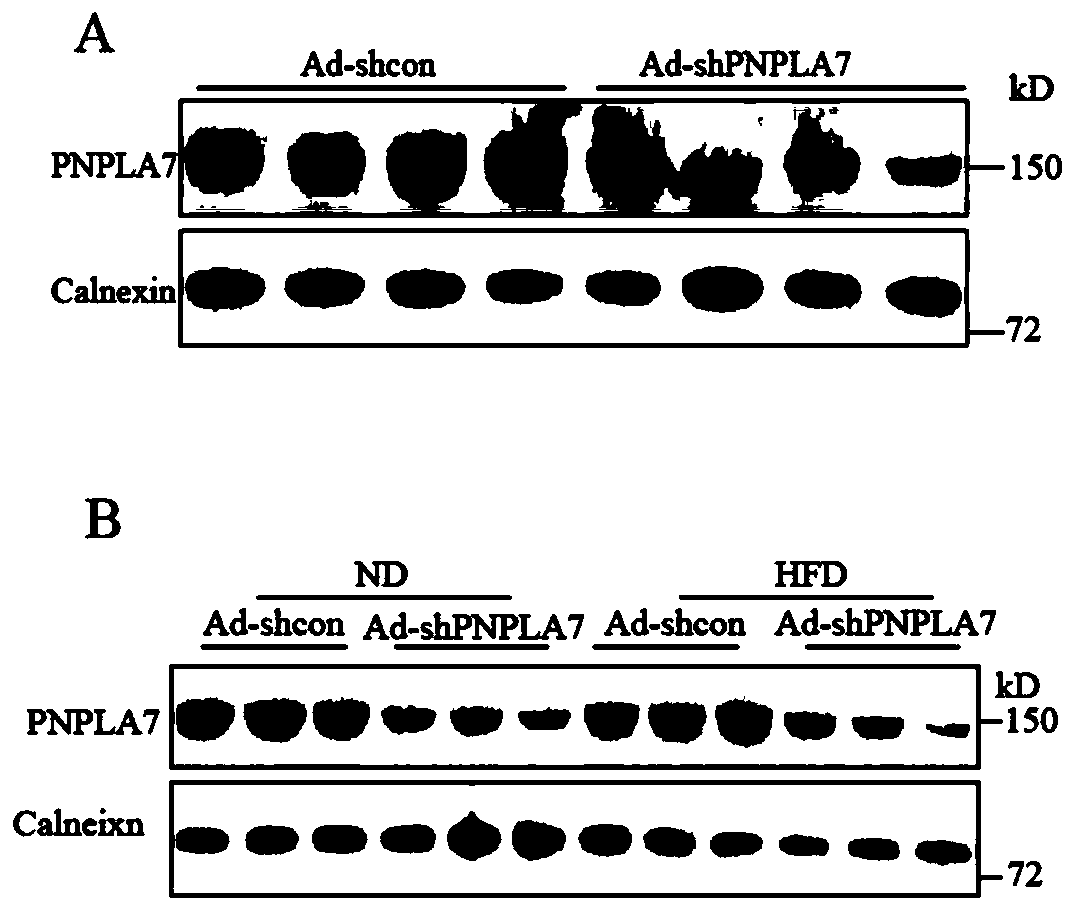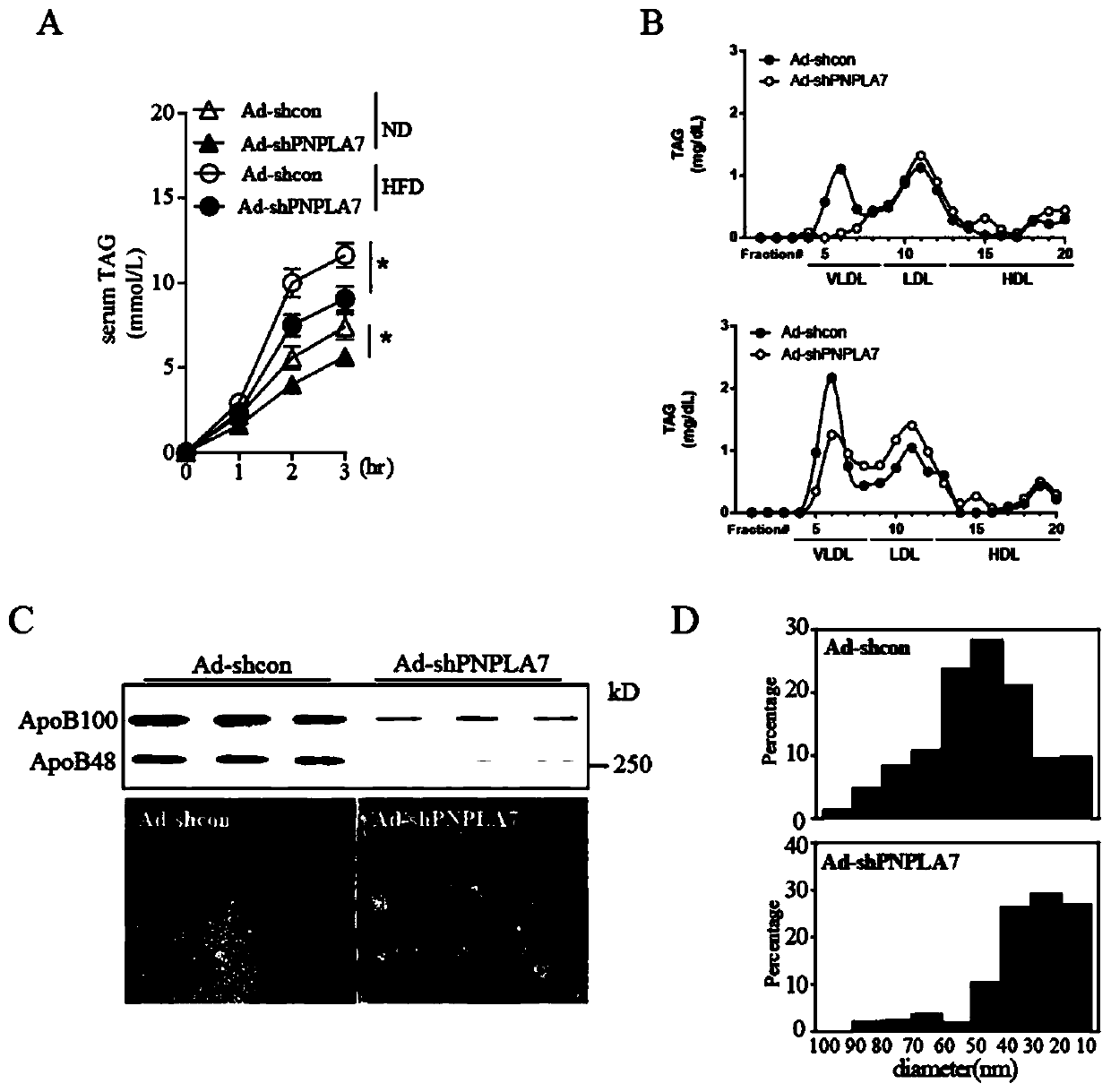Application of potato-like phospholipase 7
A phospholipid and potato-like technology, applied in the field of biomedicine, can solve problems such as unknown physiological functions in the body
- Summary
- Abstract
- Description
- Claims
- Application Information
AI Technical Summary
Problems solved by technology
Method used
Image
Examples
Embodiment 1
[0025] Such as figure 1 As shown in -A, 5 normal human liver samples and 12 fatty liver disease patient samples were collected, RNA was extracted, and the expression level of PNPLA7 gene was detected. By further analyzing the relationship between serum TAG and TC levels and PNPLA7 expression in 17 samples, it was found that PNPLA7 was positively correlated with TAG and TC levels in human blood.
Embodiment 2
[0027] After the knockdown of PNPLA7 in the liver, the TAG content in the liver of the mice was significantly increased, and the serum TAG was significantly reduced
[0028] Knockdown PNPLA7 adenovirus (knockdown sequence shown in SEQ ID NO.1) was injected into the mouse tail vein to knock down PNPLA7 in the liver ( figure 2 -A and B). The liver and blood of the mice were collected 7 days after the virus injection, and the liver lipids were extracted by the Folch method, and the TAG content of the mouse liver and the TAG content of the mouse serum were detected by using the TAG detection kit (WAKO). The content increased significantly, and the serum TAG content decreased significantly.
Embodiment 3
[0030] After knockdown of PNPLA7 in the liver, the rate of VLDL secretion is reduced
[0031] Hepatic PNPLA7 knockdown was performed by injecting knockdown PNPLA7 adenovirus through mouse hypertensive tail vein.
[0032] After 5 days of tail vein injection of adenovirus, the mice were fasted for 8 h, and 500 mg / kg body weight of TritonWR-1339 was injected into the tail vein to block the clearance and degradation of VLDL in the blood of mice. Take the blood at time points 0, 1, 2, and 3 h, let it stand at room temperature for 1 h, centrifuge at 4000 rpm, 4 °C for 30 min, transfer the supernatant, centrifuge again at 13000 rpm, 4 °C, 10 min, transfer the supernatant to a new Centrifuge the tube, and detect the TAG content in the serum to represent the amount of VLDL in the serum. Such as image 3 As shown in -A, after knocking down PNPLA7 in the liver, the secretion of VLDL in the liver of the mice was significantly reduced.
PUM
 Login to View More
Login to View More Abstract
Description
Claims
Application Information
 Login to View More
Login to View More - R&D
- Intellectual Property
- Life Sciences
- Materials
- Tech Scout
- Unparalleled Data Quality
- Higher Quality Content
- 60% Fewer Hallucinations
Browse by: Latest US Patents, China's latest patents, Technical Efficacy Thesaurus, Application Domain, Technology Topic, Popular Technical Reports.
© 2025 PatSnap. All rights reserved.Legal|Privacy policy|Modern Slavery Act Transparency Statement|Sitemap|About US| Contact US: help@patsnap.com



